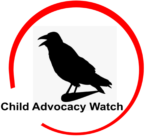 (Press release) (Includes audio)-U.S. Department of Health & Human Services, Administration for Children & Families, Children’s Bureau
(Press release) (Includes audio)-U.S. Department of Health & Human Services, Administration for Children & Families, Children’s Bureau
This brief provides an overview of biased language in child welfare case practice and strategies to identify and study it. Key themes explored in the brief include the implicit biases of child welfare professionals that are manifested in spoken and written language, methods to study biased language, and how an improved understanding of biased language promotes more effective and equitable child welfare practice.
From the Introduction:
“Marginalized families are overrepresented in the U.S. child welfare system and persistently demonstrate worse well-being, permanency, and safety outcomes. Parents who have disabilities;
are of lower socioeconomic status; and are Black, Indigenous, or persons of color (BIPOC) are significantly more likely to be reported to child protective services, have substantiated maltreatment allegations, and experience the removal of a child from their home (Beniwal, 2017; Chambers & Ratliff, 2019). The disproportionate involvement of BIPOC children in child welfare puts them at a disadvantage early in their childhoods. Their entry into an institution rooted in racism makes them more vulnerable to maltreatment in out-of-home care, longer stays in care, and a lower likelihood of reunification with their families than whitechildren (Bruster et al., 2019; Edwards et al., 2021).”
To read or download, see Language Bias in Child Welfare: <https://www.acf.hhs.gov/sites/default/files/documents/cb/language-bias.pdf> or <https://www.acf.hhs.gov/cb/report/identifying-language-bias>

